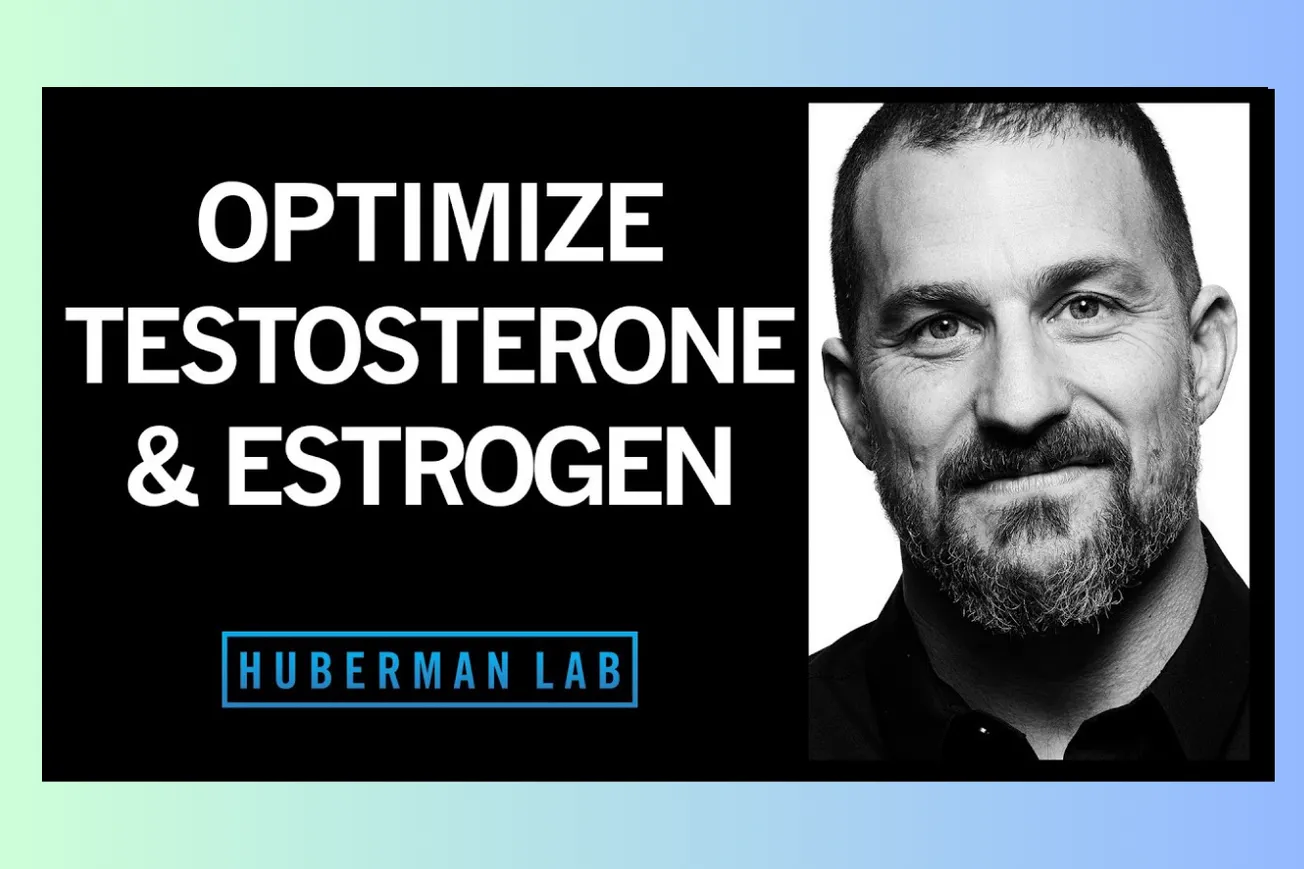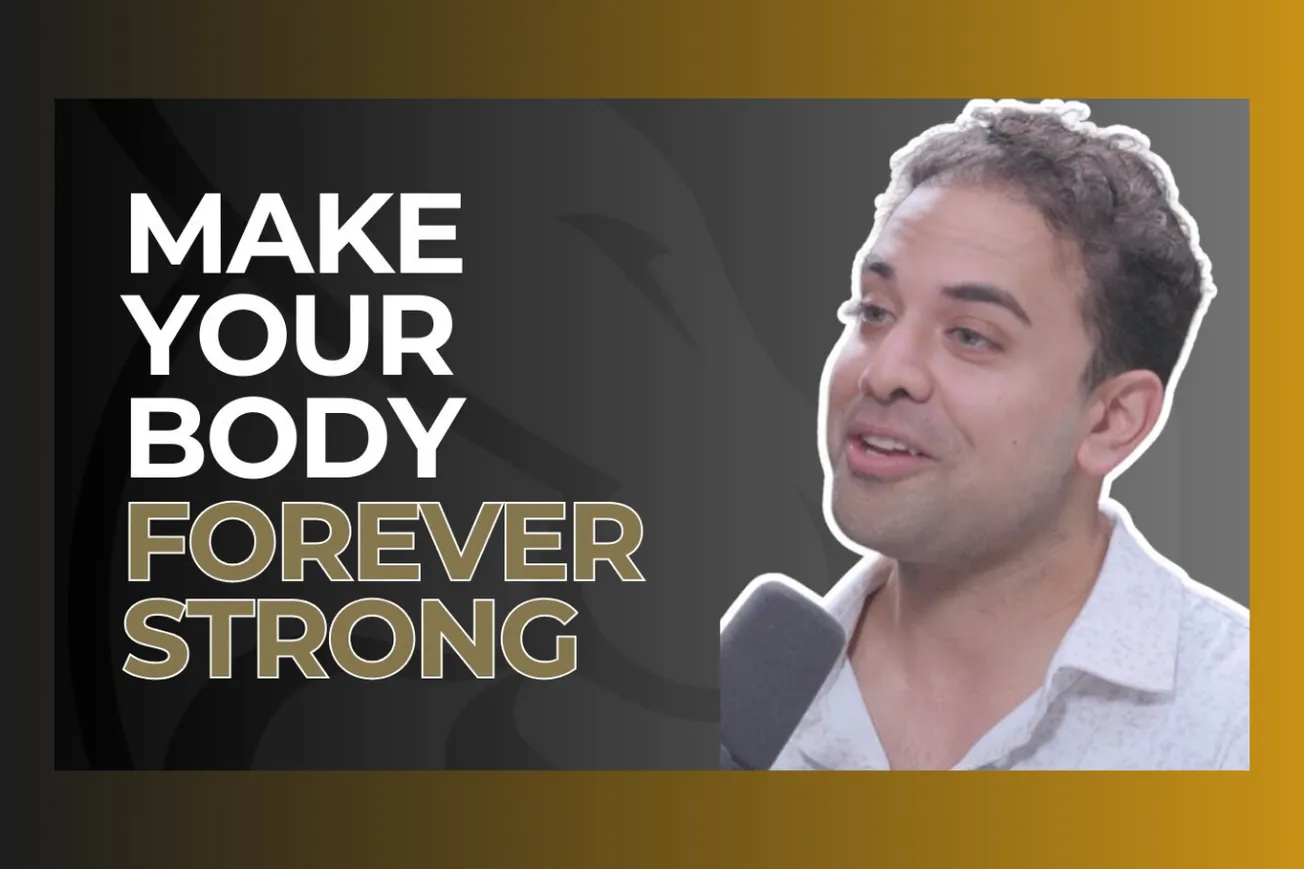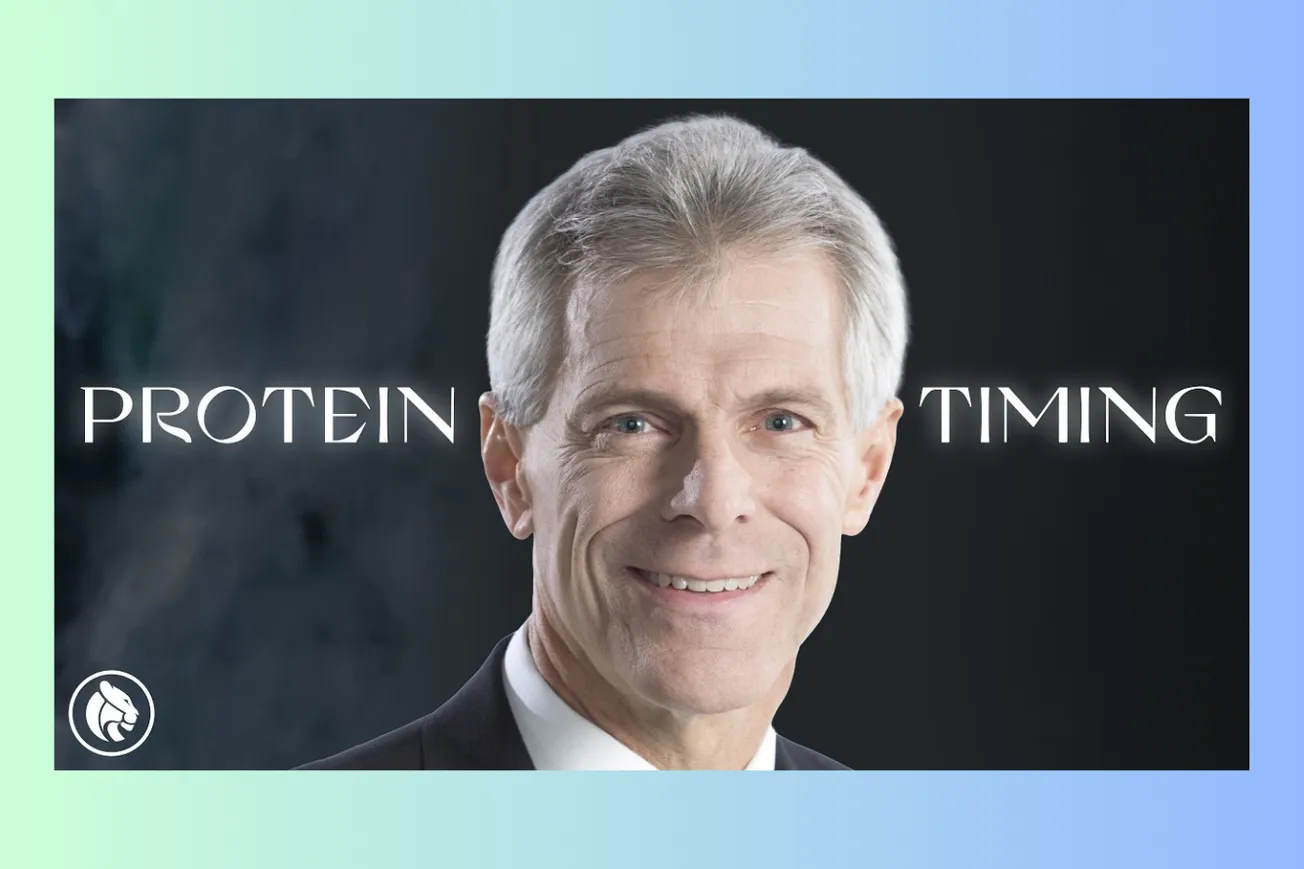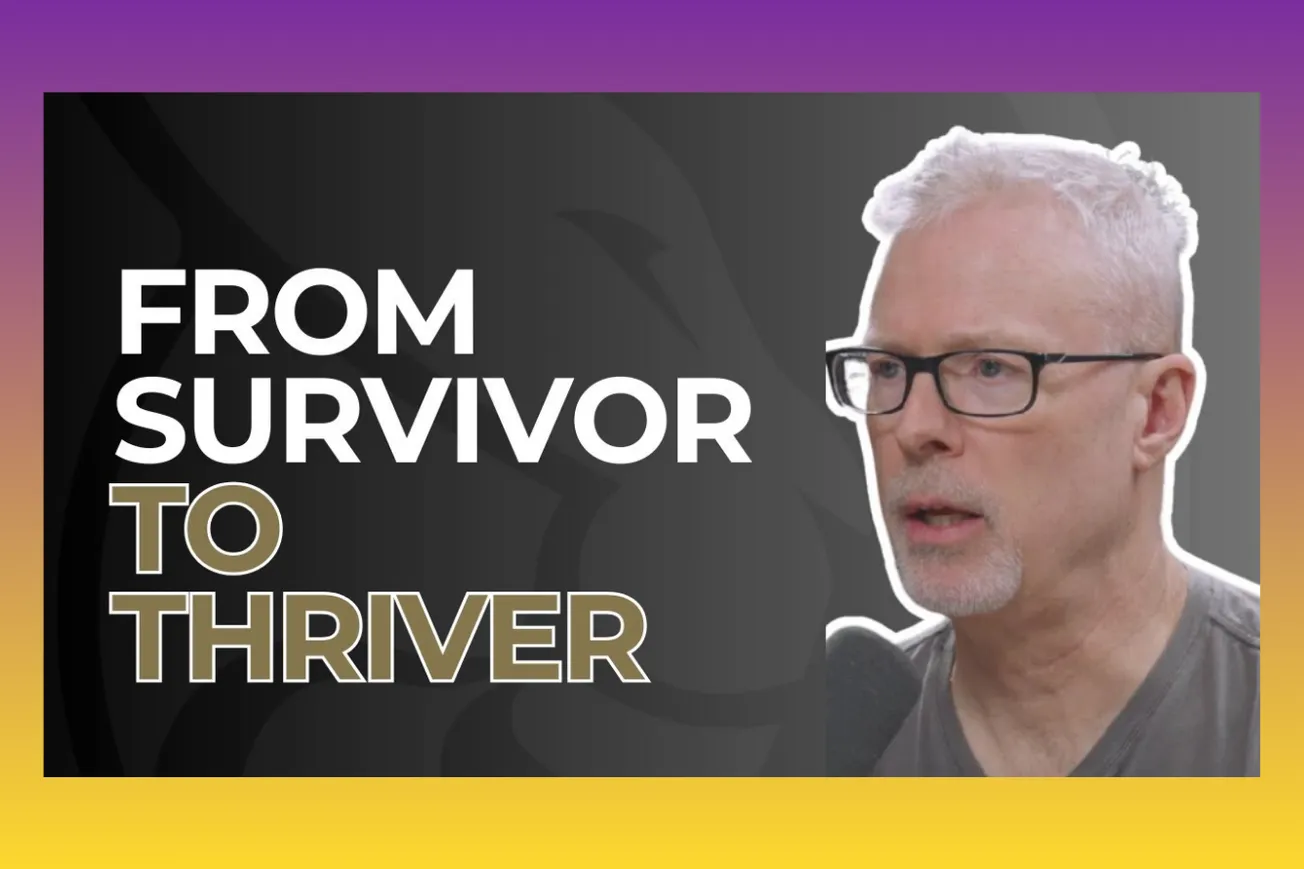Table of Contents
Explore the science behind optimizing crucial sex hormones like testosterone and estrogen. Understand how behaviors, environment, and supplements influence these powerful molecules and learn actionable strategies for balance and well-being, applicable to both men and women.
Timeline Overview
- 00:00 - 15:00 — Introduction to hormones, the salutogenesis vs. pathogenesis models of health, and the basics of testosterone and estrogen production, including the roles of ovaries, testes, adrenals, and the enzyme aromatase. Discussion on hormone level variations across lifespan and the importance of ratios.
- 15:00 - 30:00 — The profound impact of competition on testosterone via the amygdala and dopamine pathways. Exploration of how testosterone influences novelty-seeking, reduces anxiety, and makes effort feel good. Discussion on sex differences (testosterone drives seeking, estrogen drives receptivity) and the surprising role of estrogen in male libido. Impact of sex and abstinence on testosterone levels.
- 30:00 - 45:00 — Hormonal shifts associated with parenthood: decreased testosterone and cortisol, increased prolactin and estradiol in expecting fathers, influenced by contact with the baby. Impact of illness (via IL-6 cytokine) on reducing sex drive and hormones. Introduction to pheromones and their controversial but documented effects in animals (Lee-Boot, Bruce, Vandenbergh effects) and potential subconscious influence in humans (menstrual cycle modulation, mate recognition via scent).
- 45:00 - 1:00:00 — The critical link between breathing (especially nasal breathing) and hormone optimization. How apnea (particularly sleep apnea) negatively impacts hormones by increasing CO2 and cortisol, disrupting sleep quality essential for gonad function. Benefits of nasal breathing for facial cosmetics, gas exchange, sleep quality, and indirectly, hormone balance. Introduction to light's role via dopamine pathways.
- 1:00:00 - 1:15:00 — Deep dive into how light viewing affects dopamine, which influences both hormone production (GnRH, LH, FSH leading to T & E) and melanin/pigmentation. Seasonal effects on mood and breeding tied to light exposure. Protocol emphasis: get bright light early (2-10 mins sunlight ideally), avoid bright light at night to optimize dopamine and cortisol rhythms for hormone health. Connection between temperature, day length, and hormones.
- 1:15:00 - 1:30:00 — Exploring the effects of cold and heat exposure. Discussion on cold exposure (ice baths, cold showers) potentially increasing T & E via rebound vasodilation after initial vasoconstriction, possibly influenced by neural cooling. Debunking temperature-based conception myths; confirming heat's negative impact on sperm health. Introduction to exercise effects: why do heavy compound movements increase testosterone? Focus on neural recruitment.
- 1:30:00 - 1:45:00 — Specific exercise protocols for testosterone optimization: heavy weight training (1-8 rep range, not to failure) increases T for 24-48 hrs by engaging high-threshold motor units. Endurance training >75 mins can decrease T via cortisol; best to strength train before cardio if done in the same session. High-Intensity Interval Training (HIIT) also increases T. Discussion on estrogen optimization, particularly regarding menopause symptoms (hot flashes, mood, brain fog).
- 1:45:00 - 2:00:00 — Supplements for menopause: Black Cohosh (modest effect), Panax Ginseng (libido), Valeriana Officinalis (hot flashes/insomnia), and notably Pueraria Mirifica (potent effects comparable to ERT). Foundational nutrients: Vitamin D, Zinc, Magnesium are crucial; deficiencies negatively impact hormones. Opioids strongly suppress T & E via GnRH disruption. Supplements potentially increasing testosterone: Creatine (increases DHT), Tongkat Ali (increases free T, slight anti-E), Boron (increases free T). Discussion on SHBG and albumin roles. Introduction to ecdysteroids like Turkesterone and their potential anabolic effects.
- 2:00:00 - End — Supplements acting via Luteinizing Hormone (LH): Prescription hCG (increases LH, thus T & E). Fadogia Agrestis potentially increases LH (limited human data, side effects unclear). Importance of blood work for monitoring due to feedback loops. Recap of foundational importance of light, breathing, sleep before considering supplements. Closing remarks and podcast support information.
Key Takeaways
- Testosterone and estrogen are crucial for both sexes, influencing mood, behavior, energy, and reproduction; their ratio is key.
- Hormones influence behavior, and behavior reciprocally influences hormones (e.g., competition boosts testosterone, parenting lowers it).
- Optimizing foundational behaviors like nasal breathing, quality sleep, and correct light exposure is critical for healthy hormone levels.
- Specific exercise types modulate hormones: heavy lifting (not to failure) boosts testosterone, while prolonged endurance can lower it.
- Certain supplements show promise for modulating estrogen (e.g., Pueraria Mirifica for menopause) or testosterone (e.g., Tongkat Ali, Creatine).
- Dopamine plays a central role, linking light exposure, competition, sex drive, and hormone release pathways (GnRH, LH, FSH).
- Stress management is vital, as excess cortisol competes with the production pathways for testosterone and estrogen.
- Inflammation (like high IL-6 during illness) negatively impacts sex steroid hormone function and desire.
- Monitoring hormone levels via blood work is essential when considering interventions due to complex feedback loops and individual variation.
Foundations: Testosterone, Estrogen, and Their Interplay
- Testosterone and estrogen are the primary sex steroid hormones, present in both males and females, though in different ratios. These ratios profoundly influence well-being, mood, anxiety levels, optimism, reproduction, and sexual behavior.
- Major sources are the ovaries (primarily estrogen) and testes (primarily testosterone), but the adrenal glands also produce testosterone. Body fat and testes contain aromatase, an enzyme converting testosterone to estrogen.
- Hormone levels fluctuate significantly across the lifespan. Estradiol (the main estrogen) is low prepuberty in females, skyrockets during puberty, varies with the menstrual cycle, and drops significantly during and after menopause (typically age 45-60).
- Testosterone is low prepuberty in males, skyrockets during puberty, and then generally declines about 1% per year, though significant individual variation exists, with some men maintaining high levels into old age. Andrew Huberman notes: "there's actually a lot of examples of men in their 90s... who still have testosterone levels that mimic pubertal levels".
- Estrogen is also crucial for male libido; excessively low estrogen levels in men, often overlooked in testosterone therapy discussions, can eliminate libido entirely. Optimal function requires a balance of both hormones in both sexes.
- DHEA (Dehydroepiandrosterone), mainly from the adrenals, acts as a precursor, increasing both testosterone and estrogen. Its specific effect depends on baseline hormone levels and aromatase activity; high aromatase can shift DHEA conversion more towards estrogen.
The Brain-Body Axis: How Hormones Are Controlled
- The nervous system governs hormone release. Gonadotropin-Releasing Hormone (GnRH) neurons, originating in the nose area during development and migrating to the hypothalamus, trigger the pituitary gland.
- The pituitary then releases Luteinizing Hormone (LH) and Follicle-Stimulating Hormone (FSH) into the bloodstream. These hormones travel to the gonads (ovaries or testes) via the vascular system.
- LH and FSH stimulate the gonads to produce and release estrogen and testosterone. The amount of blood flow (vasodilation/constriction), controlled by neurons, is critical for delivering these stimulating hormones effectively to the gonads.
- Dopamine, a key neuromodulator, strongly influences this axis. Increased dopamine stimulates the pituitary to release hormones that promote testosterone production. Light exposure, particularly sunlight viewed by the eyes, boosts dopamine levels.
- Stress negatively impacts this system. Cholesterol is the precursor molecule for cortisol (a stress hormone) as well as testosterone and estrogen. High stress prioritizes cortisol production, reducing the amount of cholesterol available to become sex steroids.
- Inflammation, specifically pro-inflammatory cytokines like Interleukin-6 (IL-6) released during illness, suppresses sex drive and negatively impacts sex steroid hormone function, potentially by interfering with receptors. Reducing IL-6 and promoting anti-inflammatory cytokines like IL-10 supports hormone health.
- Hormonal systems operate on negative feedback loops. Excessively high testosterone or estrogen can signal the hypothalamus/pituitary to reduce stimulating hormones (like LH), thereby decreasing further production. This highlights the need for careful modulation and monitoring.
Behavioral Optimization: Light, Breathing, and Sleep
- Light Viewing: Getting bright light, ideally sunlight, in your eyes for 2-10 minutes within the first hour of waking is crucial. This optimizes the timing of cortisol release (peaking early, declining later) and boosts dopamine, supporting healthy testosterone and estrogen production. Avoid sunglasses during this time unless necessary for safety; prescription lenses/contacts are fine. Artificial bright light can be used if sunlight isn't accessible.
- Night Light Avoidance: Viewing bright light, especially in the middle of the night (typically 10 pm to 4 am), suppresses dopamine and consequently disrupts testosterone and estrogen levels. This effect might be a major contributor to the negative hormonal impact of sleep deprivation.
- Nasal Breathing: Breathing through the nose (not the mouth) whenever possible, both awake and asleep, is vital. Mouth breathing is linked to negative changes in facial structure, reduced gas exchange efficiency, and increased sleep apnea risk. Nasal breathing improves oxygen intake, CO2 offloading, and potentially dilates nasal passages over time, making it easier. Practice nasal breathing during exercise (except at max effort) to adapt.
- Sleep Apnea Connection: Apnea (cessation of breathing, often during sleep) is strongly linked to suboptimal hormone levels in both men (low T) and women (imbalanced T/E ratios). Apnea increases CO2 buildup and cortisol, which negatively impacts gonad function and hormone production. Improving breathing patterns (nasal breathing, potentially mouth taping at night if safe, or CPAP for severe cases) reduces apnea and supports hormone health by ensuring quality deep sleep.
- Sleep Quality: Getting sufficient deep sleep (slow-wave and REM) is fundamental for hormone optimization, partly by regulating cortisol and supporting the health and function of the gonads (ovaries and testes). Light and breathing habits directly impact sleep quality. Andrew Huberman states, "...going into deep sleep and getting the proper patterns of slow-wave sleep and REM sleep are important for hormone optimization.".
- Salutogenesis Mindset: Adopting a mindset focused on promoting well-being (salutogenesis) rather than solely avoiding disease (pathogenesis) can enhance the positive physiological effects of healthy behaviors. Believing an activity is good for you amplifies its benefits.
Competition, Sex, and Parenting: Behavioral Impacts on Hormones
- Competition: Engaging in competition increases testosterone in the short term, regardless of winning or losing. Winning further boosts testosterone later via dopamine pathways. Testosterone reduces anxiety (acting on the amygdala) and promotes novelty-seeking and willingness to compete or forage, historically linking higher T males with greater reproductive access, often through increased effort and risk-taking. Andrew Huberman notes testosterone has an "incredible effect of making effort feel good" by lowering stress.
- Sexual Activity & Abstinence: Sexual activity significantly increases testosterone during the act (up to 70% reported in one study), much more than just observing sex (~10%). However, ejaculation triggers prolactin release, causing a refractory period and temporarily lowering dopamine. Abstinence from ejaculation for a week or more can lead to very large increases in testosterone (up to 400% reported). It's a nuanced relationship: both sex and abstinence can raise testosterone, but via different temporal patterns and mechanisms.
- Hormones & Libido: In both sexes, testosterone drives the seeking of sex (libido, motivation). In females, estrogen promotes receptivity to mating. Crucially, estrogen is also required for libido in males; excessively low estrogen eliminates male sex drive despite high testosterone.
- Parenthood: Expecting fathers experience significant hormonal shifts, including drops in testosterone (~50%) and cortisol, and doubling of estradiol (estrogen), driven by increased prolactin. These changes are thought to promote parenting behaviors and reduce mate-seeking drive, potentially linked to storing energy (body fat gain) for childcare demands. The duration of these effects post-birth can be influenced by the father's contact level (including smell cues) with the baby.
- Pheromones: While controversial in humans due to the lack of a clearly defined pheromone organ (like the vomeronasal organ in animals), subconscious chemical communication likely occurs. Studies show female sweat components can modulate menstrual cycle timing in other women (though not necessarily synchronize). Humans can also identify their partner's scent on clothing with high accuracy, suggesting sensitivity to unique chemical signatures beyond conscious smell.
Exercise and Temperature: Physical Stressors and Hormonal Response
- Heavy Resistance Training: Lifting heavy weights (roughly 1-8 repetition range, corresponding to 70-95%+ of max effort) significantly increases testosterone for 24-48 hours. This effect is linked to recruiting high-threshold motor units (activating more neurons to activate more muscle fibers). Training to failure (where a rep cannot be completed) seems less effective for boosting testosterone than stopping just short of failure.
- Endurance Exercise: Moderate endurance exercise generally doesn't negatively impact testosterone if kept under ~75 minutes. However, very prolonged or extremely intense endurance activity (>75 minutes, depending on intensity) can suppress testosterone, likely due to sustained high cortisol levels. High-Intensity Interval Training (HIIT) and sprinting, which involve high neural output similar to heavy lifting, tend to increase testosterone.
- Training Order: If performing resistance training and endurance exercise in the same session, doing the weight training first followed by cardio appears optimal for maximizing the testosterone response. Doing cardio first can blunt the testosterone increase from the subsequent weight training. Performing them on separate days shows no negative interaction.
- Cold Exposure: Practices like ice baths, cold showers, or even specialized cold packs may increase testosterone and estrogen. The likely mechanism isn't direct cold action but rather a rebound effect: initial cold causes vasoconstriction (blood vessels narrow); subsequent warming causes significant vasodilation (vessels widen), potentially delivering a surge of stimulating hormones (like GnRH, LH) to the gonads. Cooling might also temporarily inhibit neurons controlling vasoconstriction, enhancing the rebound.
- Heat Exposure: Excessive heat is detrimental to sperm health and fertility in males, as proteins crucial for sperm function are heat-sensitive. The idea that ambient temperature during conception influences offspring sex lacks strong scientific evidence. While moderate heat might influence vasodilation, extreme or prolonged heat exposure to the testes is generally advised against for fertility.
Supplements and Compounds for Hormone Optimization
- Foundational Support: Ensuring adequacy of Vitamin D, Zinc, and Magnesium is crucial, as deficiencies are linked to impaired hormone production pathways. These nutrients provide general support for endogenous hormone production rather than forcing large increases. Blood work is recommended to assess levels.
- Creatine: Supplementing with creatine monohydrate (a well-studied performance enhancer) consistently increases levels of Dihydrotestosterone (DHT), a potent androgen derived from testosterone via the 5-alpha reductase enzyme. This may accelerate hair loss in susceptible individuals due to DHT's role in male pattern baldness.
- Tongkat Ali (Eurycoma longifolia Jack): Evidence suggests it can increase free testosterone by potentially reducing levels of Sex Hormone Binding Globulin (SHBG), though it may also have slight anti-estrogenic effects. Typical doses mentioned are 400-800mg daily, but potential side effects like alertness/insomnia exist.
- Boron: Some studies indicate boron supplementation (a few grams daily) might increase free testosterone levels, possibly by interacting with SHBG. Its origin is trace minerals, potentially from meteoric deposits. Side effect profile seems minimal but warrants caution.
- Fadogia Agrestis: This supplement purportedly works by increasing Luteinizing Hormone (LH) from the pituitary, which then stimulates the gonads to produce more testosterone and estrogen. Human data is limited, and the side effect profile is not well-documented, necessitating caution and blood work monitoring.
- Ecdysteroids (e.g., Turkesterone): These plant- and insect-derived compounds (found in spinach, quinoa) are structurally similar to cholesterol. A 2019 study found significant anabolic effects (increased muscle mass/strength) from ecdysteroid supplementation combined with resistance training, leading the researchers to suggest they be considered for prohibited substance lists in sports.
- Menopause Support: Beyond hormone replacement therapy (HRT), some supplements show promise:
- Pueraria Mirifica: Multiple studies found it potent, comparable to conventional estrogen therapy in reducing menopause symptoms.
- Black Cohosh: Shows modest but consistent benefit over placebo for some symptoms.
- Panax Ginseng: May improve libido during menopause.
- Valeriana Officinalis: Might help with hot flashes and associated insomnia.
- Caution: Always discuss hormone-modulating supplements with a doctor, especially concerning cancer risks.
Bottom Line
Optimizing testosterone and estrogen involves foundational health practices like proper breathing, light exposure, and sleep, which regulate critical pathways involving dopamine and cortisol. While specific exercise protocols and targeted supplements can offer further modulation, understanding the underlying mechanisms and monitoring via blood work is key for safe and effective results.









